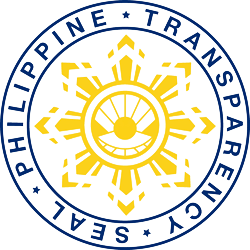Filipino exporters should take advantage of various trade agreements involving the Philippines in winning potential markets, according to the country’s trade chief.
Speaking at the General Membership Meeting of Philexport Cebu recently (25 November), Department of Trade and Industry (DTI) Secretary Ramon Lopez identified free trade arrangements (FTA), which the Philippines, as an ASEAN Member State, can use to expand export markets, including ASEAN’s free trade agreements (FTAs) with China, Japan, Korea, India, Australia and New Zealand (NZ).
The country also has a bilateral agreement with Japan and has recently signed an FTA with the European Free Trade Association (EFTA), composed of Iceland, Liechtenstein, Norway, and Switzerland, which is still undergoing ratification. It is also a beneficiary of the Generalized Scheme of Preferences (GSPs).
“All these mechanisms provide market access for Philippine goods and services and entitle us to zero tariffs on most products,” said Sec. Lopez, adding that among the signed FTAs, the ASEAN-China FTA (ACFTA), since 2004, has so far the biggest consumer market size consisting of 1.93 billion consumers.
ACFTA has also provided zero tariffs for about 7,500 Philippine products, including bananas, copra oil, mineral oils and fuels, selenium, industrial fatty alcohol, copper, machinery and mechanical appliances, and vehicles including parts and accessories.
Differentiate, innovate, diversify
Aside from encouraging exporters to take advantage of FTAs, the trade chief emphasized the importance of continuing market-relevant differentiation, unique selling proposition and inclusive innovation, anchored on the country’s areas of strengths, as factors that will fortify the country’s mark in the global market.
Citing that the country’s top three export markets in 2015 were Japan, China and the US, which comprised 47% of total Philippine exports, Sec. Lopez discussed the need to diversify the country’s export markets. Also in the top 10 were Hong Kong, Singapore, Germany, Korea, Thailand, Taiwan and the Netherlands.
Sec. Lopez said that the Philippine Export Development Plan (PEDP) 2015-2017 addresses the need to diversify and expand export markets, which has become even more imperative today in view of the challenges posed by ASEAN integration.
“The government is committed to provide better macro environment,” he said.
PH-China prospects
In the same meeting, Sec. Lopez shared that as a result of President Rodrigo Duterte’s recent visit to China, new export potential in China is expected to increase from USD 17 billion to USD 60 billion in five years. The country also managed to close a 100-million-worth of fruit exports contract to China.
He also mentioned that the Chinese government has already lifted its ban on 20 banana and 7 mango exporters from the Philippines. In 2015, the country exported 448,000 metric tons of bananas to China valued at $157.5 million.
China is also looking at increasing its imports from the Philippines particularly on high value commercial crops such as mango, coconut and dragon fruit, as well as high-end fishery products, including lapu-lapu, crabs, shrimps, prawns and tuna.
PH-Russia, other prospects
Philippine exporters can also benefit from Russia’s GSP which covers about 2,800 goods including meat, fish, fruits and vegetables, coffee, cocoa, rice, coconut oil and processed foods, according to Sec. Lopez.
During the most recent bilateral discussions between President Duterte and Russian President Vladimir Putin, at the margins of the Asia-Pacific Economic Cooperation (APEC) meeting in Peru, Russia committed to buy up to USD 2.5 billion worth of Philippine fruit, grains or vegetables in the next 12 months.
The Philippines is also a beneficiary country to other GSP programs of Australia, Belarus, Canada, the European Union (EU), Japan, Kazakhstan, New Zealand (NZ), Norway, Switzerland, Turkey and the United States (US).
In December 2014, the EU included the Philippines in its GSP+ scheme, which grants zero tariffs to 6,274 products. In 2015, the US reinstated its GSP, eliminating duties on about 5,000 Philippine products
Sec. Lopez also flagged possible market openings that other FTAs, which are currently being negotiated by the country, may bring, including the Regional Comprehensive Partnership Agreement (RCEP) among ASEAN and its six partner-economies China, Japan, Korea, India, Australia and NZ, as well as the Philippines-EU FTA.
“Our concerted efforts must always be directed to a single direction, which is to help our country in achieving global competitiveness, consistent with President Duterte’s 10-point socio-economic agenda,” he concluded.



